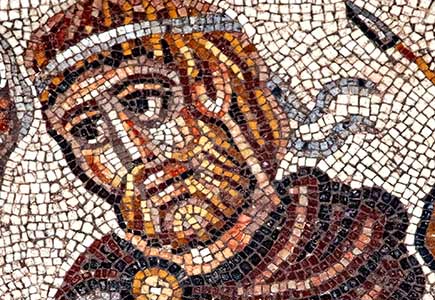- Membership
- Perks and Discounts
- Things To Do
- Resources
- News
- About
- Shop
Related Content
Former School of Government Dean Receives Holshouser Award
March 19, 2024
This article was updated March 20, 2024. Mike Smith ’78 (JD), dean emeritus of the...
Read MoreThe Business of Caring
March 8, 2024
The American economy is confusing. Growth is up, but consumer confidence is down. Inflation is...
Read More‘A Compelling Project for Good’
March 8, 2024
When Irving Hoffman ’94 (MPH), director of international operations for the Institute for Global Health...
Read More-
2024
-
2023
-
2022
-
2021
-
2020
-
2019
-
2018
-
2017
-
2016
-
2015
-
2014
-
2013
-
2012
-
2011
-
2010
-
2009
-
2008
-
2007
-
2006
-
2005
-
2004
- Academics and Athletics
- Admissions
- Alumni Profiles
- Alumni Recognition
- Around Town
- Arts
- Books
- Campus Profile
- Campus Safety
- Carolina Alumni Awards
- Carolina Alumni Leadership
- Carolina Alumni Programs and Outreach
- Carolina Alumni Reunions
- Carolina Alumni Review
- Celebrations
- Championships
- College and Costs
- Commencement
- Coronavirus
- Discovery
- Extracurricular
- Faculty
- Faculty Awards
- For the People
- Go Heels
- Greek Life
- Hark the Sounds
- Higher Education
- Homecoming
- In Class
- In Memoriam
- Innovation and Technology
- Issues
- Object Lesson
- On View
- Our Treescape
- Philanthropy
- Podcast
- Public Service
- Race and Reckoning
- Research
- Sexual Assault
- Silent Sam
- Sports
- Structures
- Student Achievement
- Students
- Timelines
- Tuition and Financial Aid
- UNC Libraries
- UNC’s History
- Undergraduate Spotlight
- University Achievements
- University Awards
- University Budget Issues
- University Development
- University Leadership
- University News
- University Rankings
- What We Do
- Who We Are
- Young Alumni
- Yours at Carolina
New Mosaics Discovered in Excavations in Galilee
Posted on July 2, 2014
Excavations led by a Carolina faculty member have revealed stunning new mosaics decorating the floor of a fifth-century synagogue at Huqoq, an ancient Jewish village in Israel’s Lower Galilee.
Since 2012, three well-preserved mosaics have been discovered in the same location in excavations directed by Jodi Magness, Kenan Distinguished Professor for teaching excellence in early Judaism, and co-directed by Shua Kisilevitz of the Israel Antiquities Authority.
In 2012, a mosaic showing Samson and the foxes, as related in the Bible’s book of Judges, was discovered in the synagogue’s east aisle. Last summer, a second mosaic was found that shows Samson carrying the gate of Gaza on his shoulders, also described in Judges.
A third mosaic discovered in the synagogue’s east aisle is divided into three horizontal registers, or strips, and differs in style, quality and content from the Samson scenes. It is the first time a story not told in the Bible has been found decorating any ancient synagogue. Portions of this mosaic were uncovered in 2013; the rest have been revealed this summer.
The lowest register shows a bull pierced by spears, with blood gushing from his wounds, and a dying or dead soldier holding a shield. The middle register depicts an arcade, with arches framing young men arranged around a seated elderly man holding a scroll, with lighted oil lamps above each arch. The uppermost register depicts a meeting between two large male figures. A bearded, diademed soldier wearing elaborate battle dress and a purple cloak is shown leading a large bull by the horns, accompanied by a phalanx of soldiers and elephants with shields tied to their sides. He is meeting with a gray-haired, bearded elderly man wearing a ceremonial white tunic and mantle, accompanied by young men with sheathed swords, also wearing ceremonial white tunics and mantles.
The identification of the figures in this mosaic is unclear because there are no stories in the Hebrew Bible involving elephants, Magness said.
“Battle elephants were associated with Greek armies beginning with Alexander the Great, so this might be a depiction of a Jewish legend about the meeting between Alexander and the Jewish high priest,” Magness suggested. “Different versions of this story appear in the writings of Flavius Josephus and in rabbinic literature.”
The mosaics have been removed from the site for conservation, and the excavated areas have been backfilled. Excavations are scheduled to continue next summer.
In addition to UNC, the project is sponsored by Brigham Young University in Utah, Trinity University in Texas, the University of Toronto in Canada and the University of Wyoming. Students and staff from UNC and the consortium schools participated in the dig.
More online…
- Digging for Clues: How Did Jews and Early Christians Co-Exist? Endeavors department feature from the January/February 2014 Carolina Alumni Review, available online to Carolina Alumni members.
© 2024 Carolina Alumni
